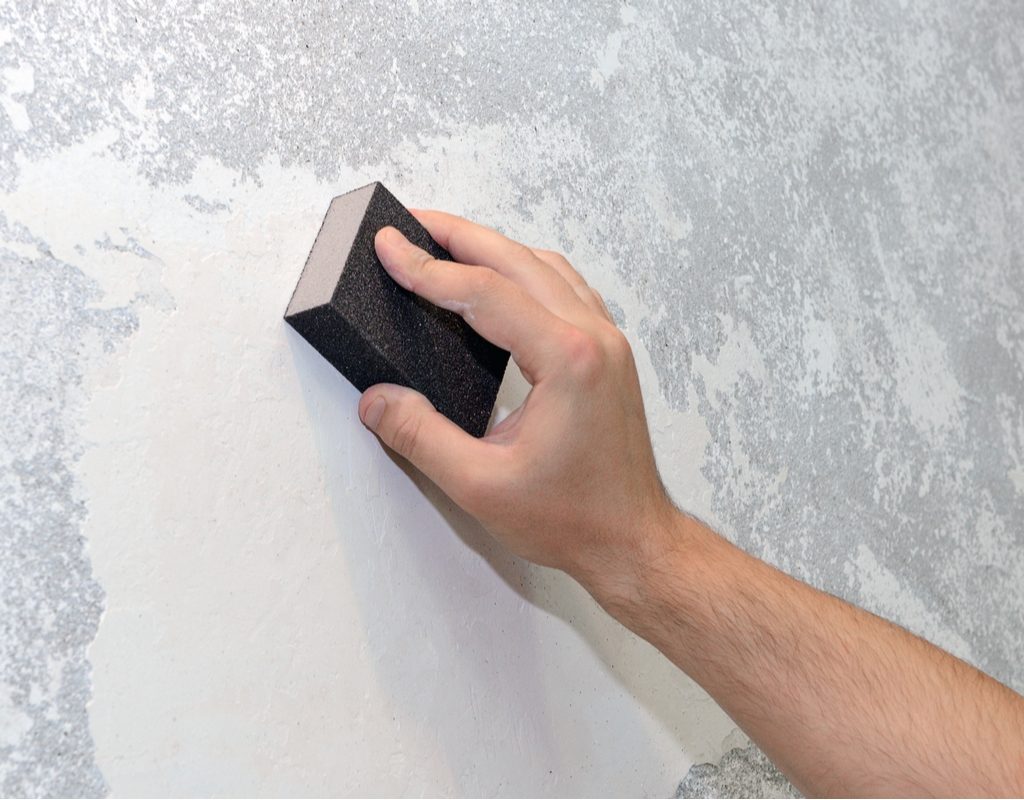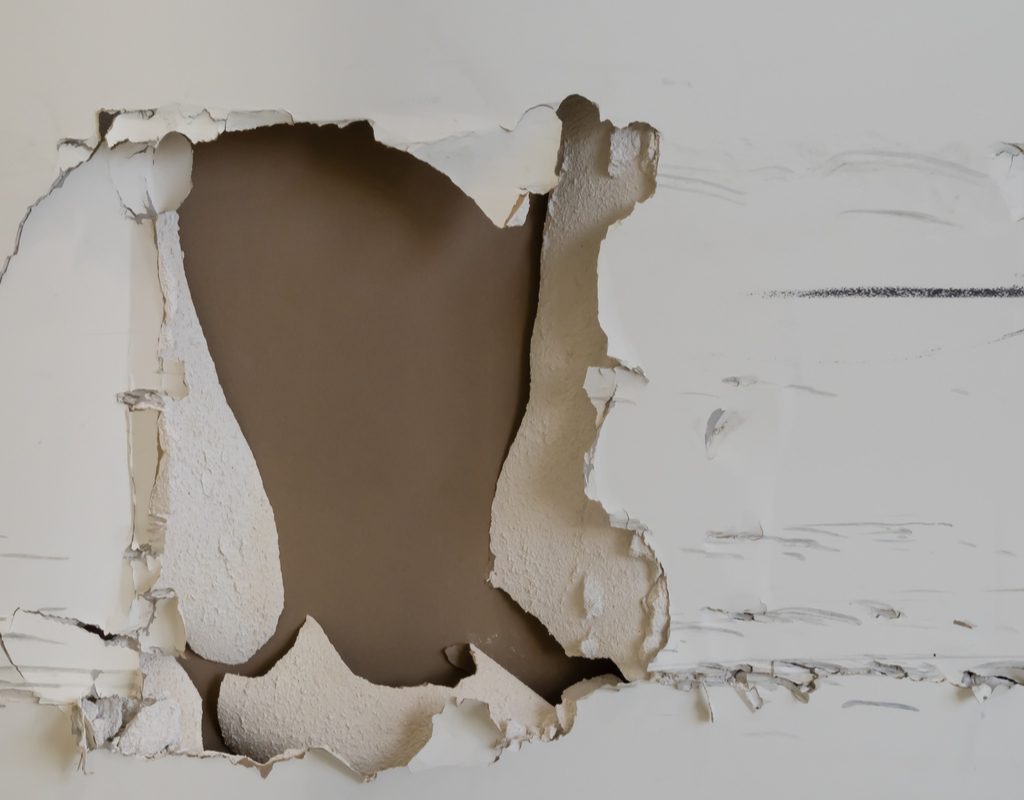Holes and dents in your drywall are just about unavoidable since the inexpensive material isn’t very durable. The goods news, however, is that these damages are super easy to fix. In just an hour, you can repair these minor holes and dents whether they arose from unstable nails, errant door handles, or even furniture moves gone wrong. With the steps below, you can repair any cosmetic blemishes, and the whole process shouldn’t take more than an hour of your time.

How to repair drywall: small holes, cracks, and dents
If that heavy picture pulled your screw through the drywall or years of old nail holes are starting to build up, give them a quick touch-up using just a few, inexpensive tools.
What you’ll need:
- Quick-drying spackle
- Putty knife
- Sandpaper with a fine grit
How to repair:
- Fill the hole or crack with quick-drying spackle using a putty knife.
- Allow the spackle to dry for the amount of time recommended by the manufacturer.
- Once dried, lightly sand the area with your sandpaper to make it flush with the rest of the wall.
- Proceed to prime and paint the repaired area.
How to repair drywall: medium-sized holes
For holes that are under four inches in diameter but too large to fill with spackle, use a drywall repair kit. These kits typically include all of the tools you’ll need to complete the repair on your own.
What you’ll need:
- Mesh covering with adhesive
- Drywall spackle
- Drywall knife
- Sandpaper
How to repair:
- Apply the mesh covering over the hole completely so that it overlaps onto the wall by about one inch on all sides.
- Use a drywall knife to apply the spackle over the mesh, covering it completely. Be sure to apply the spackle as thinly as possible on the undamaged portions of drywall to prevent bulging.
- Allow the spackling compound to dry for the recommended time.
- Use sandpaper to lightly sand down and smooth the entire spackled area.
- Proceed to prime and paint the repaired area.

How to repair drywall: large holes
For larger holes in your drywall that are bigger than four inches in diameter, you won’t be able to use putty or spackle to repair them. When repairing larger drywall holes, you’ll likely need to cut out some of the existing drywall. For this step, be cautious and avoid cutting any wires that run behind the walls. Typically, wires are attached to studs, so if the drywall hole is near a stud, call a professional for help.
What you’ll need:
- Piece of drywall larger than the hole itself
- Drywall saw
- Pencil
- Wood furring strip
- Electrical drill and screws
- Drywall tape
- Joint compound or spackle
- Drywall knife
- Sandpaper
How to repair:
- Hold your new piece of drywall over the damaged area and use a pencil to trace its edges onto the wall.
- Use a drywall saw to carefully cut out the damaged piece, following the pencil marks.
- Hold the wood furring strip vertically in the center of the hole, making sure the top and bottom of the strip extend a few inches behind the edges of the hole.
- Use an electric drill to put screws through the drywall on the top and bottom of the hole. The screws should burrow beneath the surface level of the drywall so they aren’t visible once the repair is completed.
- Place the drywall piece into the hole and drill it into the furring strip.
- Apply drywall tape on all four borders of the new drywall patch, overlapping both the old and new drywall.
- Use a drywall knife to apply joint compound or spackle over the entire patch as well as the drywall tape.
- Allow the joint compound to dry for the recommended amount of time.
- Once dried, sand down the patch to make it smooth and flush with the rest of the wall.
- Proceed to prime and paint the repaired area.
When a hole in your drywall appears, it doesn’t have to cost you a fortune to repair, and a DIY fix doesn’t need to take all day. Regardless of the size of the damage, you can flex your DIY muscles to fix it in as little as an hour, leaving your wall looking as good as new.



